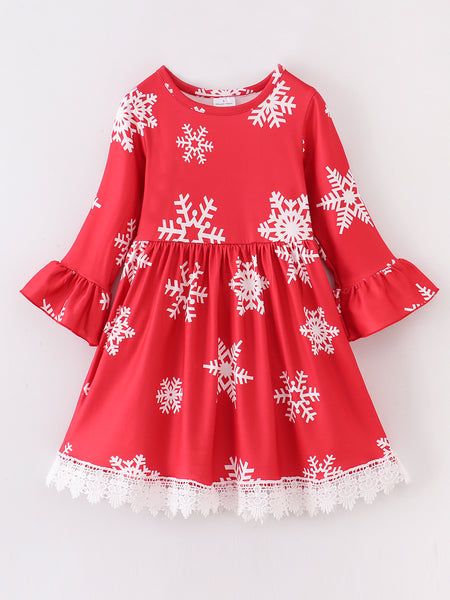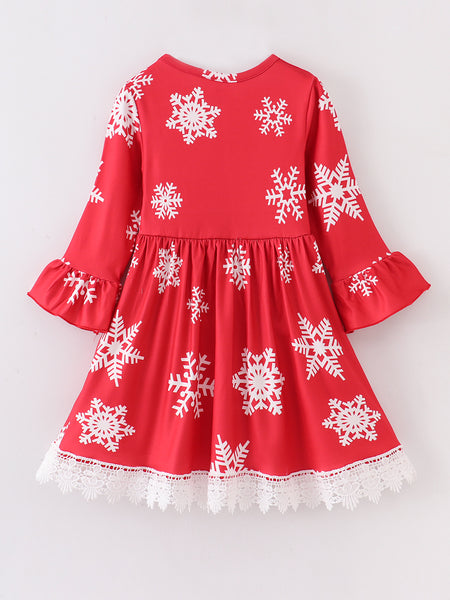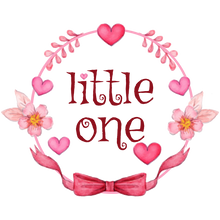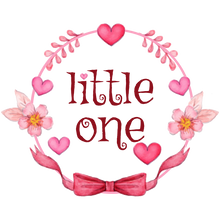
How should children's clothing be classified?
When choosing clothing for your child, pay attention to the child's physical characteristics and age characteristics. Children of different ages have different outfits. In the children's clothing industry, different types of clothing have been divided. The main types are as follows:

Long Flared Sleeve Snowflake Print Crochet Dress
(1) Baby clothes
Baby clothing refers to clothing worn by infants under 36 months. At this time, the baby's skin is delicate, the head is generally round, curious, incompetent, and chaotic. The style should be simple and loose, easy to take off and wear; the fabric should be natural fibers with strong water absorption and good air permeability. Such as soft cotton or wool. The colors are mostly light colors, warm colors or light pinks, and a little embroidery pattern can be appropriate. Never choose baby clothes with hard materials and baby clothes with hard buttons.
(2) Children's clothing
Toddler clothing refers to clothing worn by children aged 2-5. At this time, the children are lively and active, with round stomachs, potbellies, and naive attitudes. The style should be loose and lively, and the embroidery patterns of animals, characters, flowers and characters can be used locally, and it is best to have piping, inlay, and shirring techniques at the same time. Colors should be bright, stain-resistant tones. The fabric is mostly made of wear-resistant and easy-to-wash cotton textiles, and the coat can also be made of soft and easy-to-wash chemical fiber fabrics.
(3) Children's clothing
Children's clothing refers to clothing worn by children aged 6-11. At this time, children grow rapidly, their hands and feet grow, they are naughty and active, and they have self-assertion. The style should be mainly loose, there are differences between men and women, and some elastics can be made. Colors can be in contrasting shades at the same time. The range of fabrics is increased, both natural and chemical fibers are available. There are many styles of children's clothing, which should be selected according to the child's personality. Children's clothing can be further divided into three categories: small children's clothing, middle children's clothing, and large children's clothing.
(4) Juvenile clothing
Junior clothing refers to clothing worn by teenagers aged 12-16. At this time, the physical development of the teenagers has changed greatly, and the gender characteristics are obvious. They often have their own aesthetic preferences, especially like novel clothing, often ingenious. Style requirements are between children's clothing and youth clothing.
School uniforms are their most common clothes. The clothes should not be luxurious but should be styled in matching. The colors are bright and elegant, and the local small decorations should be constantly renovated. The fabric is more of a chemical fiber material. Because the child grows very fast at this time and needs to constantly update the clothes, so do not choose the clothes that are too expensive.
In terms of quality standards, they can generally be divided into three categories:
Category A: baby products. Category A (baby and toddler products) diapers, diapers, underwear, bibs, pajamas, gloves, socks, coats, hats, generally young children's clothing is category A, this standard is relatively strict, if you see Mark A, the description is relatively reliable.
Category B: Products that can come into direct contact with the skin. Category B (products that come into direct contact with the skin) bras, belly belts, vests, shorts, cotton sweater pants, shirts, (summer) skirts, (summer) pants, socks, suitable for older children, these requirements are not so strict , Children who are older can still wear it, but generally adults wear more.
Category C: Products that cannot be in direct contact with the skin. Category C (products that are not in direct contact with the skin) sweaters, outerwear, skirts, trousers, curtains, bedspreads, wall coverings, fillers, interlinings, there are very few children's clothing in this part, but there are not none on the market, it is best not to give children Put on.
From the perspective of style, the classification will be more and more detailed:
Generally divided into tops, bottoms, coats and suits. However, among the tops, there will be subdivisions such as T-shirts, vests, sweaters, etc., which will not be described in detail here.

